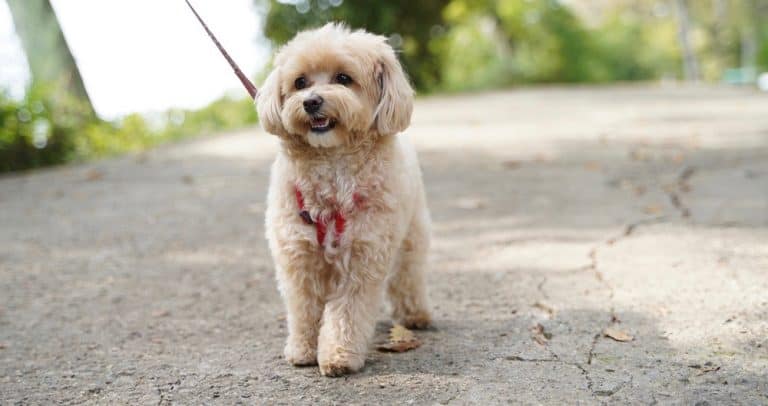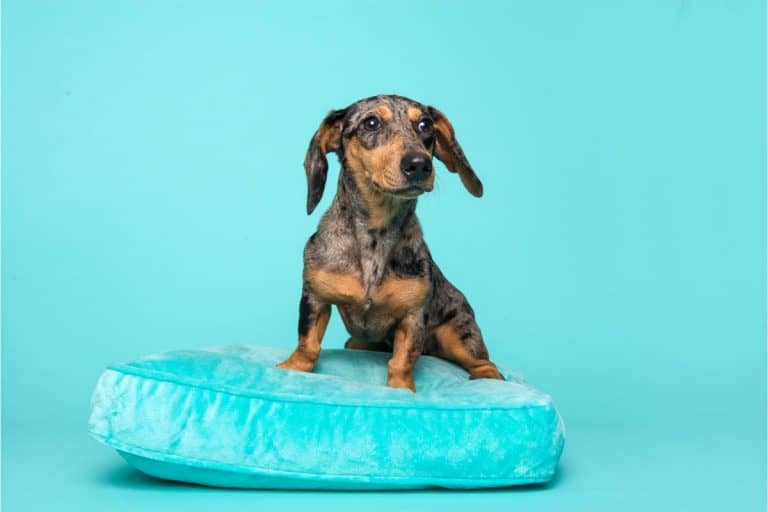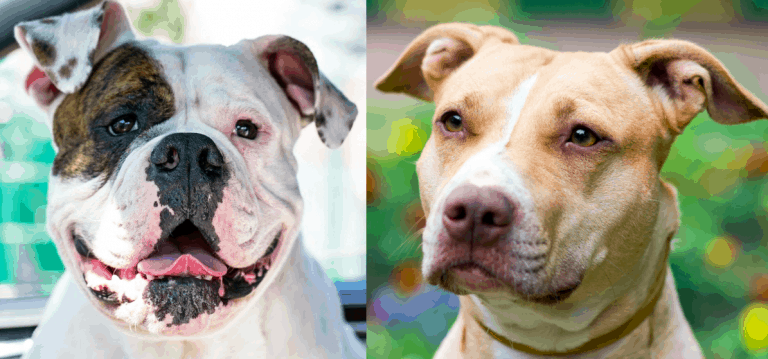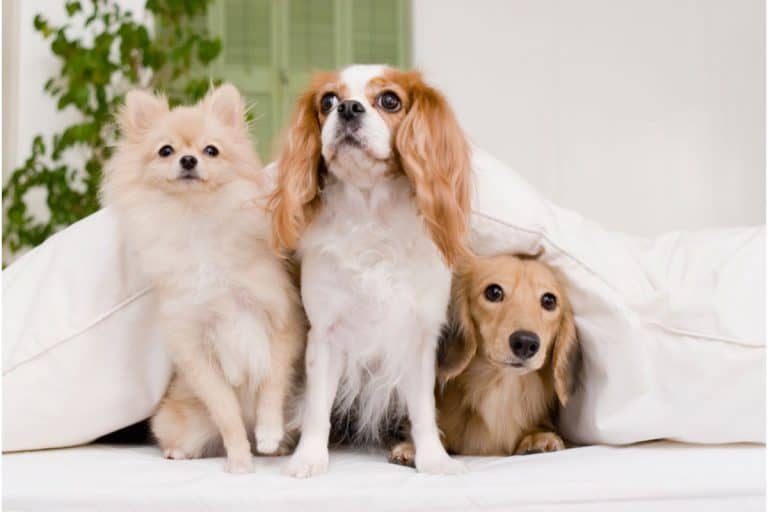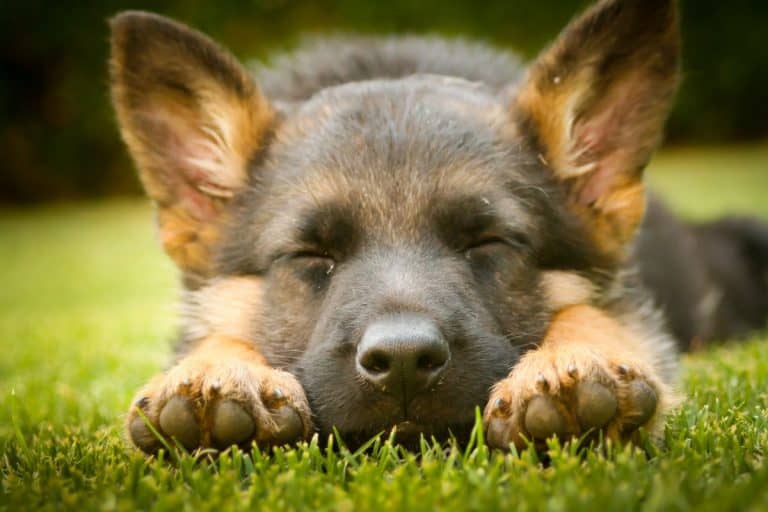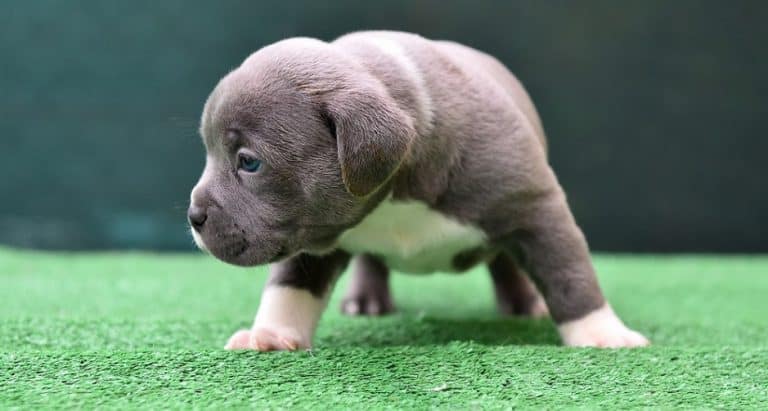Our Guide To Wirehaired Dachshunds: Everything You Need To Know
There are a lot of dog breeds out there – in fact, there are nearly four hundred recognized breeds worldwide, not including the endless lists of mixed breeds and more! As a result, most people are spoilt for choice when it comes to choosing the best breed of dog that suits them!
However, this does come with a snag. Finding the right breed of dog for you also means that you will spend an endless amount of time and effort researching different dog breeds.
Well, that’s where we come in. We have pulled together this complete guide to wirehaired dachshunds so you can find out everything you need to know about this breed in one place.
Hopefully, this will help save you some time so you can find out if a wirehaired dachshund is the right breed for you!
So, without further ado, let’s get right into it!
Overview: What Is A Wirehaired Dachshund?
Wirehaired dachshund is a type of breed of medium dog that originated in Germany. They are a hound-type breed of dog that is also known by many other names including ‘sausage dog’, ‘wiener dog’, and even ‘badger dog’.
Originally, wirehaired dachshunds were bred as hunting dogs who would smell, chase, and find burrow-dwelling creatures like rabbits or badgers. They would hurry down these burrows to flush out the animals hiding inside so hunters could catch them.
As a result, wirehaired dachshunds are classed as ‘hound’ dogs and have a great sense of smell.
They are easily recognizable due to their long bodies and short legs, but they also stand out from other dachshunds due to their wiry coats.
This gives them a more ‘scraggy’ appearance and even forms a large bushy mustache, beard, and eyebrows over their facial features. They do require some grooming to keep their hard coats in check.
Wirehaired dachshunds are said to make great pets for those who already have some experience handling and training dogs. They can live in city areas and with children, but require proper introductions with other dogs they may live with.
Their lifespans range between twelve to sixteen years, making them a good choice for anyone wanting a long lasting family pet.
Overall, it’s easy to see why some people may opt for a wirehaired dachshund as the breed for their next pet dog – so let’s go into more detail about this breed to see if it really is the right one for you!
Appearance: What Does A Wirehaired Dachshund Look Like?
Wirehaired dachshunds share a lot of physical traits with other dachshund breeds which helps make them instantly recognizable when compared to other breeds of dog.
They have long-backed bodies with a pointy nose and short legs – a combination that many compare to sausages or wieners. However, these physical features were specifically bred hundreds of years ago when most dachshunds were bred to be hunting dogs.
The shape and small stature of a dachshund allowed them to flush out burrow-dwelling animals during the hunt and chase them down – hence why dachshunds are so short and long.
What makes wirehaired dachshunds distinctive from their other dachshund cousins is its coat. The characteristics given by the extra fur around the breeds’ nose and eyes helps them to stand out and worm their way into many owners’ hearts.
Size And Weight
Wirehaired dachshunds are medium sized dogs due to their short but powerful legs. They tend to grow eight to twelve inches tall, although there is a miniature version of this breed that only grows up to six inches tall.
How long their body grows depends heavily on their height but a typical wirehaired dachshund will grow to around nineteen or twenty inches in length.
This may be shorter if your wirehaired dachshund does not quite reach the twelve inches of height – and especially if you have opted for the miniature version.
As for weight, wirehaired dachshunds are quite prone to obesity so the weight can vary.
A healthy standard wirehaired dachshund weighs between fifteen to thirty-two pounds (again, depending on height) while a miniature will weigh considerably less, ranging between eight to eleven pounds of ideal weight.
Coat And Colors
The coat of a wirehaired dachshund is its defining quality and what helps it differentiate itself from other dachshunds.
Wirehaired dachshunds have a ‘double coat’ which means that they have a long, harsh coat as a top layer that hides a denser undercoat.
This top layer of coat tends to shed regularly and is part of the reason why wirehaired dachshunds need more grooming than other shorthaired varieties of dachshunds.
In length, their coats are classed as a ‘medium’ – not as long as longhaired dachshunds but not as short as shorthaired dachshunds. This makes them a happy medium to some owners who want the characteristics of a longhaired dog without most of the grooming requirements.
As for color, wirehaired dachshunds come with a huge variety in color. You can find some in solid colors such as red, cream, black, blue, and Isabella (a kind of light gray/brown solid mixture, sometimes also known as lilac).
Wired dachshunds also can have mixed coats that merge different colors together in different combinations including chocolate and tan, black and cream, black and tan, and more. This means that you can find all kinds of beautiful, colorful coats in wirehaired dachshunds.
Some popular color coats that combine different colors are ‘wild boar which combines different shades of black, brown and gray, dappled coats that give the dachshund a ‘spotty’ patterned coat (usually black or brown and gray), and sable which gives the dachshund a stunning golden cover with black and tan features.
Pin-Wired Coats Vs. Soft-Wired Coats
There are three main types of coat when it comes to texture in wirehaired dachshunds.
The first is the iconic traditional coats that are hard and wiry, which helps give wirehaired dachshunds their ‘scraggy’ character. This is also the most common type of coat for wirehaired dachshunds and thus, the one most owners opt for.
The second is known as ‘pin-wired’ coats. Pin-wired dachshunds typically have a shorter coat that is closer to shorthaired dachshunds but is still hard and wiry.
While they are missing the long eyebrows and beard that features on traditional wirehaired dachshunds, they still have a sort of ‘rough’ charm about them just without much of the grooming requirements. This coat also makes the dog look ‘younger’.
The third type is the luscious soft-wired coats. These coats typically come about when wirehaired and longhaired dachshunds are crossed, passing down to their pups a soft-wire or silk-wire coat.
While slightly coarse, the coat is much longer than a traditional wirehaired dachshund and thus gives it a more fluffy, softer texture.
So, even if you are not a fan of the old-man eyebrows and beards that come with traditional wirehaired dachshunds, you can avoid these features by opting for a dog with a slightly different coat!
Temperament: What Are Wirehaired Dachshunds Like?
When looking for the right dog for you, temperament and personality are huge factors that you should consider.
While every dog is unique, most breeds share similar qualities when it comes to their behavior and personality. This is because back when dogs were bred for purposes such as hunting or herding, certain qualities in their temperament were more desirable than others.
This means that for wirehaired dachshunds, many of them share the same qualities that are looked for in hunting dogs.
Here are some of the most common qualities and personality traits seen in wirehaired dachshunds.
Many of them have been passed down from their hunting ancestors, but remember – every dog is unique and some wirehaired dachshunds will display more of these traits than others.
Energetic
Wirehaired dachshunds are said to be a lively breed of dog, with lots of energy that requires them to stay active through most of the day.
Despite having very short legs, those same legs are also very muscular and powerful as they were bred for hunting – thus, a wirehaired dachshund today still needs plenty of activity to suit their natural energy and enthusiasm.
Stubborn
They are also known for being very stubborn and independent dogs, which can make training them a little tricky. Training should begin early as a pup as this is when the dog is more easily influenced and easier to train.
Done right, you can turn this stubbornness into loyalty and a protective nature that will help you bond with your wirehaired dachshund, giving you a friend for life.
This does also mean that a wirehaired dachshund will need proper socialization too as a pup.
Wirehaired dachshunds have the potential to be very friendly creatures but without the proper training, they can sometimes be too overprotective of their homes and less likely to play nice with other dogs they either meet in the park or share a home with.
Bold
But this protectiveness and loyalty are just part of the nature of the breed. Wirehaired dachshunds are very bold and courageous dogs as these qualities are needed for an efficient hunting hound!
This means they will quickly run to your aid (or right into trouble) because they are fearless.
Once properly socialized, a wirehaired dachshund can become a super friendly little dog who will run up to new people without hesitation to say hello.
They have a very sharp scent due to originating as hunting dogs, which means that they are also naturally curious and love to follow their nose.
Vocal
Due to their origins, it’s also no surprise to hear that wirehaired dachshunds can be pretty vocal dogs too.
They have a very loud bark that they are more than eager to share but is this a natural characteristic seen in many descendents from hunting dogs.
These types of hounds were trained and bred to bark to signal that they were on the hunt or to scare and flush out their prey – so you can’t blame them for still having these qualities wired into their biological nature.
Care And Maintenance: How To Look After A Wirehaired Dachshund
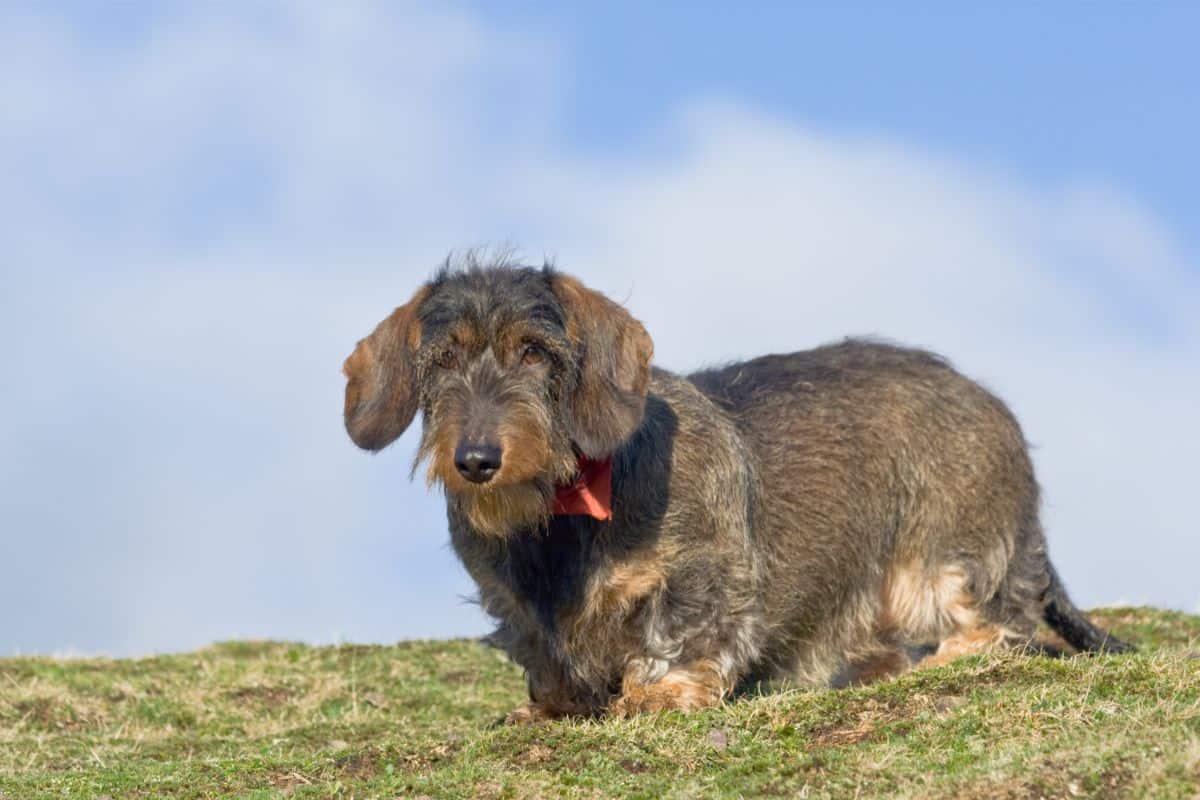
Some breeds of dogs require more care and attention than others, so it’s important to make yourself aware of the needs of each breed before you purchase or adopt your new dog. This way, you can avoid choosing a dog that you cannot care for properly.
Wirehaired dachshunds are considered to be a better breed suited to those who have already owned dogs before. As a result, breeders and kennels may advise you to choose a different breed of dog if this will be your first ever pet dog.
The reason behind this is because wirehaired dachshunds require a lot of training and socialization to ensure they grow into sociable dogs once they are past the puppy stage of life.
They also live for a fairly long time and require a lot of maintenance and exercise. As a result, you need to be prepared to step up and care for your wirehaired dachshund – otherwise you both could end up very unhappy.
If you want to learn more about the kind of care and maintenance that comes with owning a wirehaired dachshund then keep on reading below.
We will be going into more detail in aspects such as grooming, training, diet and exercise so you can have a clear idea of what will be expected of you as a wirehaired dachshund owner!
Grooming
If you want a wirehaired dachshund as your family pet, then be prepared for one thing – a lot of coat maintenance and groom.
The coats of wirehaired dachshunds are hard-wearing and fairly weather proof but they do shed and pick up a lot of debris.
This is because dachshunds are so low to the ground so their coats are more likely to sweep up all kinds of bits of dirt and debris, especially when out on walks. This means that you need to groom your wirehaired dachshund very often.
By using a stiff bristle brush after every walk, you can help loosen the dirt and debris picked up by the coat during the walk. This will help keep your wirehaired dachshund (and its coat) happy and healthy.
As well as these daily quick brush downs, you should also take the time to properly brush your wirehaired dachshund’s coat one or twice a week. This is to help get rid of any dead hairs that are clinging to your dog’s coat.
As for your wirehaired dachshund’s bushy eyebrows, mustache, and beard, all you need to do is use a steel comb to gently brush them through.
All three coats of wirehaired dachshunds shed so this means that you have to brush through your dog’s coat often to help get rid of these dead or loose hairs.
This also means that twice a year, you will also need to strip or pluck your wirehaired dachshund’s coat. Stripping, or plucking, is the process of removing dead hairs from your dog’s coat by hand instead of using other devices.
You can use a stripping knife to help you separate the sections of hair, but most people do this by hand.
These routines usually occur once in the spring and fall, and need to be done otherwise your dog’s coat will start to look dry and dull. Stripping your dog will also help keep the coat healthy and encourages the natural growth and shedding of you wirehaired dachshund’s coat.
You will also need to strip the ears, especially if you have opted for a soft-wired coat as these coats typically have longer hairs on the ears.
As for bathing, you only need to wash your dachshund once every three months. Frequent brushing should be enough to keep your wirehaired dachshund’s coat nice and clean but a bath once every three months will help keep your dachshund’s coat in the best possible condition.
Use lukewarm water and a special shampoo formulated for wirehaired dogs.
However, it’s worth noting that you shouldn’t wait until bath time to strip your dachshund’s coat. A wet coat makes it more difficult to find and remove dead hairs by hand.
Depending on how often your dachshund exercises on hard surfaces, you will also trim your wirehaired dachshund’s claws. Check them once a month and give them a little trim so your pooch can continue to walk across all surfaces happily.
Diet
Dachshunds are known to be big eaters, which means that they will happily overeat and are at serious risk of becoming overweight. This coupled with a lack of exercise and low quality food means that wirehaired dachshunds need to be properly looked after in order to avoid some serious health issues.
Just like exercise, diet is an important factor in this too.
Wirehaired dachshunds need a well balanced diet full of all the right nutrients to keep their bodies happy and healthy. They will happily eat all kinds of food ranging from dry to wet to raw – but how much you feed them heavily depends on their weight.
How many calories you should feed your wirehaired dachshund is relevant to their weight. For example, a 22 pound wirehaired dachshund will need roughly 600 calories a day.
But if your pooch is overweight, a vet may encourage you to put your wirehaired dachshund on a special diet or up their exercise schedule.
Most adult dachshunds only need two meals per day (one meal in the morning, and one in the evening) but puppies will likely eat more often (up to four times a day).
It’s important that you weigh out how much food you are giving to your dachshund and to keep track of when they are fed, sticking to a tight schedule.
This is because, as we said earlier, dachshunds are notorious big eaters and they will happily beg for more even after they’ve had their fill.
So, wirehaired dachshunds do not require unique or special meals – it’s all about schedules and weighing correct portions when it comes to feeding your wirehaired dachshund.
It is worth noting, however, that wirehaired dachshunds (like all other dogs) survive on a diet mainly made up of protein and meat.
This means that feeding your dog a ‘vegan’ diet can lead to malnutrition, illnesses, and eventually death – so you must ensure that you are feeding your wirehaired dachshund the correct nutrients in the correct portions.
This coupled with plenty of exercise will help them stay hit and healthy.
Exercise
Wirehaired dachshunds are very energetic and lively dogs, which means that you should be prepared to spend a chunk of day playing with your pooch to help meet their daily exercise requirements.
The recommended daily exercise requirement for wirehaired dachshunds is thirty to sixty minutes per day. This includes walks, games of fetch, running around, and playing games.
This kind of exercise does not need to be done all in one go as many owners prefer to split up this time in intervals of fifteen minutes scattered around the day.
However, it is super important that you meet this daily exercise requirement. Dachshunds are prone to growing overweight and obese, and thus makes them suspectible to other related health conditions.
Keeping your wirehaired dachshund is vital for its physical health – as well as its mental.
Wirehaired dachshunds are naturally active and energetic dogs and failing to meet that requirement can cause them to become bored.
This boredom can sometimes lead them to loud and long vocal sessions to entertain themselves, or they will start digging up your yard due to their high prey drive (like we said earlier, they are descended from hunting dogs, after all).
If you want to keep your wirehaired dachshund busy when you have to attend to other matters, then make sure you spoil them with plenty of toys and chews. This should be enough to keep themselves occupied while you head out to work or do chores.
This high energy drive does not mean that you need to have a huge garden for a wirehaired dachshund, however.
This breed of dog lives quite happily in cities and with small backyards – as long as you take them for frequent walks and engage in enough playtime to keep them adjective and enriched.
Training
Some breeds of dog are more difficult to train than others and trying to train a wirehaired dachshund can be a bit of a mixed bag. Due to their terrier-type temperaments and personalities, dachshunds are very intelligent but also very stubborn.
This means that your wirehaired dachshund may suffer from ‘selective hearing’ – where they pretend not to have heard you when they don’t want to do something.
However, dachshunds are very food motivated dogs and a little treat will definitely get them listening to you. The only issue with this is that feeding your wirehaired dachshund too many treats can lead to health issues.
Instead, try using lots of praise to help positively reinforce your dachshund’s training and make the sessions fun. Wirehaired dachshunds love exercise and activity so keeping things light and playful will help them be more receptive to your training.
Training should start young and you should also socialize your wirehaired dachshund as soon as possible when they are still in the puppy stage.
It’s much easier to train a puppy dachshund than an adult one, and you will find it a lot easier to potty train them and prevent loud barking.
Socializing is also important for helping your dachshund learn to be more comfortable around other dogs and people.
Dachshunds are bold dogs who, thanks to their hunting ancestry, will bark whenever something new and exciting happens.
They can also be very protective and will also bark to ward off possible threats – so it’s important to teach your wirehaired dachshund what is a threat and what is not.
So, when they are a puppy, introduce them to new dogs, different environments, noises, activities, and people to help socialize them. Never force your dog into uncomfortable situations or put them in danger – but don’t be afraid to shelter them either.
Otherwise, your wirehaired dachshund will bark at every little thing that they are not used to from the mailman to passing cars, your neighbor’s cat or another friendly pooch they spot while out on a walk.
To sum up training wirehaired dachshunds easily – do it soon and do it often. This way, you can avoid raising your dachshund to be an annoyance!
Health: What Issues Are Common With Wirehaired Dachshunds?
Every dog breed has its own common health issues and ailments, and dachshunds are no different.
Like with all dachshunds, wirehaired dachshunds are most likely to suffer from intervertebral disc disease (or IVDD for short) with nearly a quarter of all dachshunds developing the ailment at some point in their lives.
This is due to their long backs and short legs as IVDD is a spinal disorder that follows an herniated intervertebral disc. .
Older wirehaired dachshunds are more likely to develop this disease, but you can help reduce the chances of this by installing soft stairs and ramps to help your dachshund get up and down onto furniture or into certain areas.
This will help keep jumping to a minimum, thus reducing the risk of your dachshund herniating a disk.
Other than IVDD, wirehaired dachshunds are also susceptible to ailments and illnesses caused by obesity.
Not only does being overweight increase the likelihood of your wirehaired dachshund training their backs, but it also causes various cancers and degenerative mitral valve disease (often shortened to DMVD).
DMVD is a type of heart disease that is common in older dogs and so, allowing your wirehaired dachshund dog to live most of its life overweight or obses will increase its likelihood of developing this form of heart disease as it grows older.
Another common condition seen in dachshunds is profressive retinal atrophy (PRA), although wirehair dachshunds are less likely to develop it compared to other coats.
This is because PRA is an inherited condition that is carried down by certain genes. These genes are most prevalent in longhair dachshunds, which explains why different coats have a different likelihood of developing this condition.
PRA causes eventual blindness, even though how quickly it develops can range from a period of months to years. It can have a serious impact on your dachshund’s quality of life and you should always keep a lookout for any changes in your dachshund’s behavior and vision.
Annual examinations by the vet or a canine ophthalmologist can help this, especially if you have opted for a soft-wire dachshund that has a longhaired parent.
So, you should be prepared for any likely conditions or diseases that can develop in your wirehaired dachshund.
Most of these common illnesses can be avoided with plenty of exercise and a good diet, as well as purchasing some extra things like soft stairs and ramps to help your dachshund move freely around your home without straining its spine.
However, some things like PRA cannot be avoided because they are inherited – but you can at least be aware of the risk and prepare yourself to look after a potentially blind dog.
Wirehaired dachshunds have the ability to live for many years with a lifespan ranging between twelve to eighteen years, so as long as you take great care of your pooch, you are sure to have a long lasting friend with this addition to your family.
Frequently Asked Questions
Here, we are going to go through some common questions asked related to wirehaired dachshunds. If you still have any queries relating to this breed, they may be asked in the following section so take a peek!
Are Wirehaired Dachshunds Good around Children?
Generally speaking, dachshunds are a great addition to all family units. They are good with kids on the condition that they have been properly socialized and trained.
This way, your dachshund is less likely to bark and stand their ground against a kid, and will more likely see them as a playmate and friend.
It’s a good idea to slowly introduce your new wirehaired dachshund to young children and always supervise them when interacting with particularly young children, toddlers, and babies.
This will help them get to know the kid and find out how much they are willing to put up with.
You should also try to teach your children to behave appropriately around your dachshund too. Don’t allow them to poke and prod and pull on tails and ears just because they are kids.
All dogs have their snapping point and allowing your kids to poorly treat any dog will only put them in danger of a bite.
Are Wirehaired Dachshunds a Good First Dog?
Absolutely not. Many breeders and kennels and rescue centers will ask you about your experience with raising dogs and some may even turn you away if you have never looked after a dog before.
This is because dachshunds are high maintenance dogs that require a lot of time and attention. If you bring one into your home only to find that you don’t have the time to properly care for them, then you will be putting them at risk of neglect.
Wirehaired dachshunds need lots of exercise, frequent grooming, and strict feeding routines. If you are not already experienced with raising a low maintenance dog, then you will probably struggle with raising a wirehaired dachshund.
Do Wirehaired Dachshunds Bite?
Wirehaired dachshunds are just as likely to bite as any other dog but if they have not been properly socialized, then a dachshund is more likely to bite and show aggression.
This is because the hunter instinct of wirehaired dachshunds is to act boldly to threats – so you need to teach them what is not a threat (your other pets, children, strangers) to avoid any potential biting.
Where can I get a Wirehaired Dachshund?
If you are set on getting a wirehaired dachshund, then the next step is to find out where you can adopt or purchase one to introduce to your family.
You can first check with your local shelters and rescues to see if there is a wirehaired dachshund who is in desperate need of a good home, but there are also other shelters and clubs you can check with that are more likely to have the right dachshund for you.
These include the dachshund rescues all around the United States. The Dachshund Club of America has tools and contacts available to help you find dachshunds in need of adoption.
If you would prefer a puppy dachshund as they are easier to train, then you will need to find a reputable breeder.
There are a lot of breeders out there who care more about profit than the actual wellbeing of their dogs and so, you will want to avoid these kinds of breeders for many reasons.
Firstly, what you pay for your puppy will only go towards increasing the misery of the dogs they use in their business, but the puppy you purchase may be more likely to develop illnesses and contract parasites such as worms and fleas.
So, scour forums in your area, talk to kennel clubs and ask around for a reputable wirehaired dachshund breeder in your area.
How Can you Tell if a Dachshund Puppy has a Wirehaired Coat?
Puppies are cute but they also have very fine coats that make it tricky to properly identify wirehaired dachshunds from other coats.
The only definite way to be certain that your puppy will be a wirehaired dachshund is if both parents are also wirehaired dachshunds.
Your breeder will also wait 3 weeks to determine the coat type because the more a puppy grows, the more obvious it will be to see what type of coat they have.
How long this will take depends mainly on genetics. Wirehaired dachshund puppies will grow a rough or coarse outer coat over time and the very early beginnings of a pair of bushy eyebrows and perhaps even a beard.
Compared to shorthaired and longhaired dachshund puppies, their coats will not feel as smooth or sleek.
They will need their first stripping as they near their first birthday and after this first year, their adult coat should start to come through. Once they reach two years old, they will not have a full adult coat and will look like a traditional wirehaired dachshund dog.
Final Thoughts
Wirehaired dachshunds are very cute dogs that make a great addition to any family, but it’s important to understand the breed before you buy.
If you are thinking of getting a wirehaired dachshund of your own, then check over the above information again to ensure you fully understand the needs of this breed.
This way, you can understand the changes you will need to make to your routine, the things you need to buy, and important information regarding training and care.
Then, you can pick up your newest family member and feel confident that you can give them a happy, healthy life!

